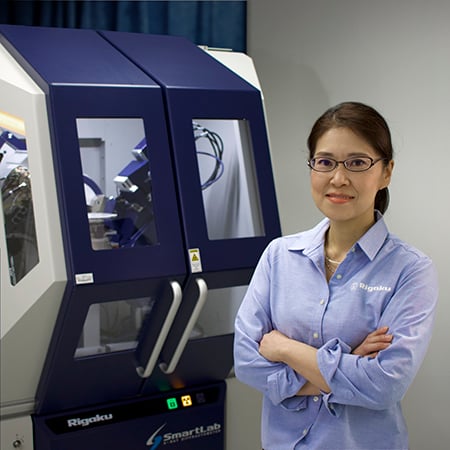Application Note B-XRD1030
Introduction
Metal nanoparticles exhibit different characteristics from bulk bodies due to the size effect. At this time, it is possible to produce outstanding characteristics by achieving uniform particle size and variation. Observation using a transmission electron microscope (TEM) is a widely known method for investigating the size and variation of particles on the nano size level. However, this method requires considerable time and labor to determine factors such as the average structure or particle diameter distribution. If the small-angle X-ray scattering method is used, the average structure (particle diameter distribution) can be determined in a time ranging from a few minutes to about 1 hour.
Measurements and results
Figure 1 shows a TEM photograph of gold nanoparticles. From the TEM photograph, the size of the gold nanoparticles is estimated to be approximately 4-5 nm. The same gold nanoparticles were used in a TEM measurement and were also measured with the small-angle X-ray scattering method. The results of analyzing the obtained SAXS profile are shown in Figure 2.
Figure 3 shows an overlay of the particle diameter distribution obtained from a TEM photograph, and the particle diameter distribution obtained from the small-angle X-ray scattering method. The results show that there is an extremely good match of the average size and degree of variation between the results obtained with TEM observation and the results obtained with small-angle scattering measurement.
 Figure 1: TEM photograph of gold nanoparticles
Figure 1: TEM photograph of gold nanoparticles
 Figure 2: Small-angle X-ray scattering profile of gold nanoparticles
Figure 2: Small-angle X-ray scattering profile of gold nanoparticles
 Figure 3: Overlaid plot of particle diameter distributions obtained from TEM observation and small-angle X-ray scattering
Figure 3: Overlaid plot of particle diameter distributions obtained from TEM observation and small-angle X-ray scattering
Reference
Sugawara et al., Chem. Lett., 10 (2002), 1030-1031.

